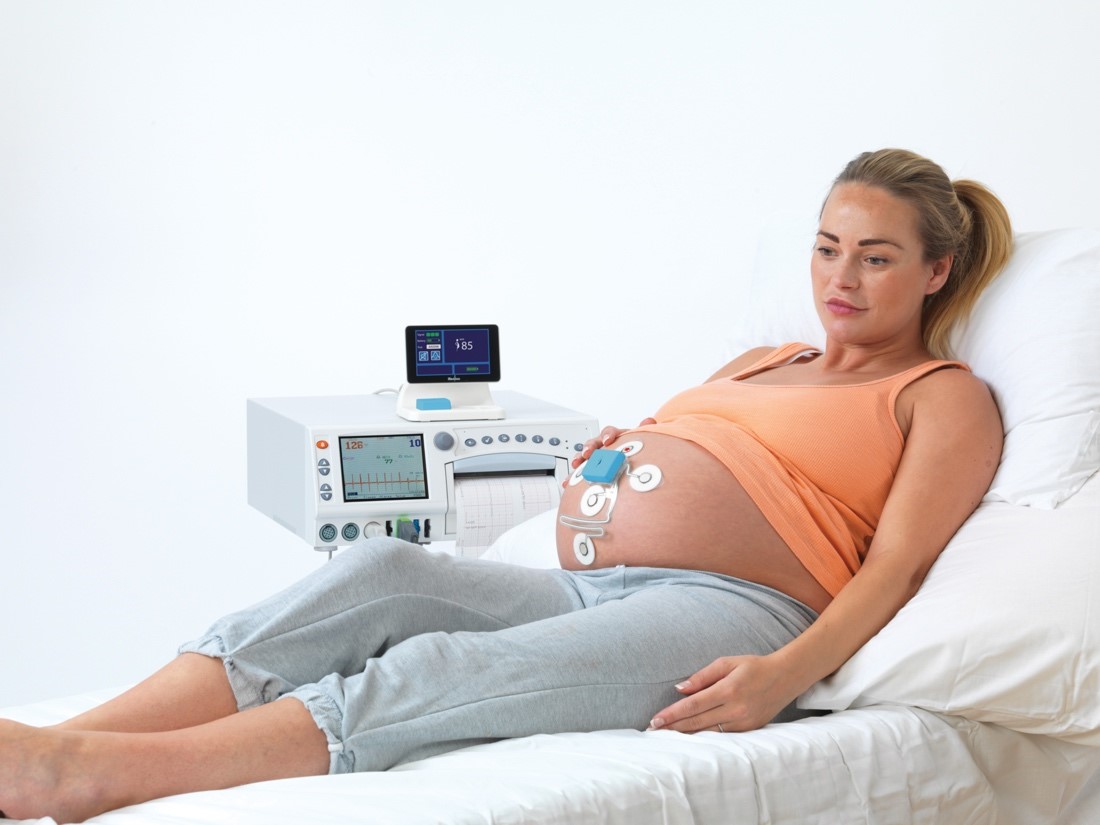For years, the mainstay of monitoring women in labor and their babies has been limited to external methods called TOCO and doppler ultrasound. However, in situations when clinicians are unable to monitor either the baby's heart rate or the mother's contractions, the only other options at their disposal were invasive methods and tools, such as a fetal scalp electrode or intrauterine pressure catheter.
However, both of these invasive options have their limitations and risks, such as infection and patient discomfort. But now, with advancements in monitoring, like electromyography (EMG), clinicians can return to the safety of monitoring labor externally with better technology.
Advancing External Monitoring Technology
There are many reasons why external monitoring is superior, but TOCO and doppler ultrasound were never a perfect science. As cited in a study published in the Journal of Gynecology and Obstetrics, the limitations of external uterine monitoring with traditional methods include failed or inadequate monitoring of contractions due to obesity, placement of monitors, and limited information focused only on the frequency of contractions.1
Often, there is no information on the strength, duration, or base tone of the uterus, and it cannot filter out movement artifacts. However, according to a study published in Reviews in Obstetrics & Gynecology, EMG is unique in that it focuses on overall uterine muscle activity.2
Here are three more advantages of EMG as a labor monitoring technology.
1. Patient Safety
Both TOCO and invasive monitoring methods are less than ideal when it comes to patient safety. For starters, it can be difficult to distinguish maternal and fetal heart rates with traditional external monitoring. However, with EMG, the fetal electrocardiogram and maternal electrocardiogram can be monitored separately—allowing for continuous, reliable information about both the patient's labor status and the fetal status.
Meanwhile, invasive monitoring methods rupture membranes when they are placed, introducing the risk of infection and abruption. Further, placing the monitors (although sterile themselves) through the unsterile vagina into the uterine cavity can lead to colonization of the amniotic cavity with bacteria and increase the risk of maternal fever, as reported in a study published in the American Journal of Obstetrics and Gynecology.3
EMG, as a noninvasive method, helps to ensure better monitoring and reduces infection risk.
2. Patient Inclusivity
As the prevalence of obesity continues to rise, complications associated with the condition, such as diabetes and pregnancy-induced hypertension, also increase. Because of these unfortunate realities, the importance of accurate monitoring during labor has become even more essential.
Obesity is one of the most common reasons external monitoring fails. According to a study published in Acta Obstetricia et Gynecologica Scandinavica, one of the advantages of EMG is that monitoring is not affected by the weight of the patient—accurate, reliable information is still obtained.4
This is especially important with nonreassuring fetal heart tones, including decelerations, that need to be adequately assessed with the timing of contractions.
3. Patient Comfort
With the traditional external monitoring methods of TOCO and doppler ultrasound, a laboring woman is tethered to a machine by all sorts of cables and belts. This can limit a patient's movement and laboring positioning options—not to mention the discomfort of tight straps around their abdomen.
With EMG, there are no belts or cables; contractions and fetal heart tones are transmitted via Bluetooth to a nearby monitor. This affords laboring women the flexibility to move, walk around, and change positions unencumbered by straps and cords or needing assistance. They will have more choices and a more satisfying experience. Further, physicians, caregivers, nurses, and loved ones can attend to more important needs their laboring patients may require.
That is the mark of a truly successful technological advancement—making care easier and more effective. With the advent of wireless external monitoring, providers are now able to better monitor women in labor, without risk of infection, no matter the size of the patient, while giving them the freedom of laboring how they choose.
References:
- Ayres-de-Campos D, Spong CY, Chandraharan E. FIGO consensus guidelines on intrapartum fetal monitoring: Cardiotocography. International Journal of Gynecology & Obstetrics. 2015;131(1):13-24. doi:10.1016/j.ijgo.2015.06.020
- J A. The Future of Fetal Monitoring. Reviews in Obstetrics and Gynecology. 2012;5(3-4):e132-e136. https://www.ncbi.nlm.nih.gov/pmc/articles/PMC3594859/
- Harper LM, Shanks AL, Tuuli MG, Roehl KA, Cahill AG. The risks and benefits of internal monitors in laboring patients. American Journal of Obstetrics and Gynecology. 2013;209(1):38.e1-38.e6. doi:10.1016/j.ajog.2013.04.001
- Cohen WR, Hayes-Gill B. Influence of maternal body mass index on accuracy and reliability of external fetal monitoring techniques. Acta Obstetricia et Gynecologica Scandinavica. 2014;93(6):590-595. doi:10.1111/aogs.12387

